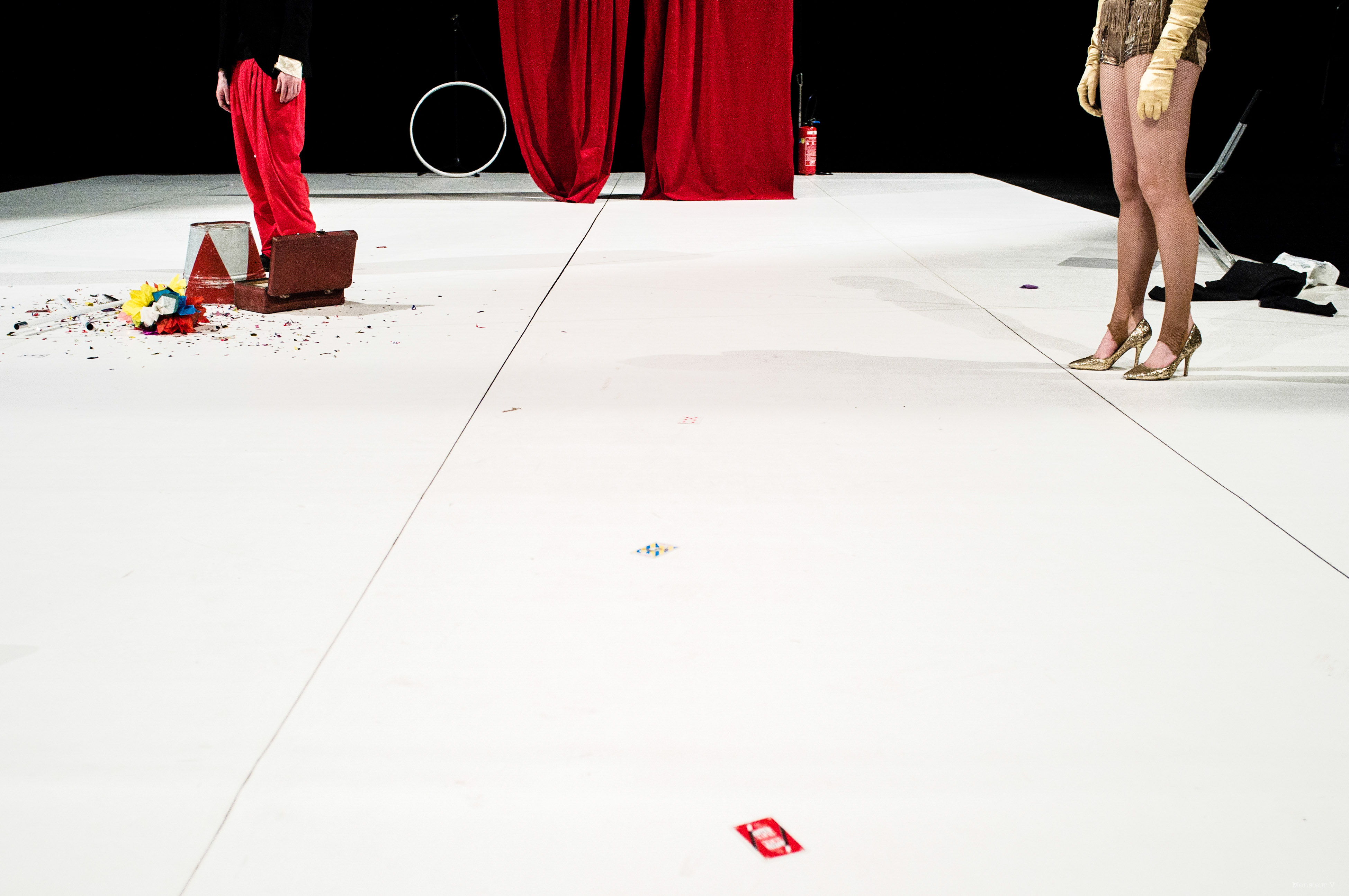In the first minute, it was clear that Or Cirque was not going to be a conventional circus show. Trained in traditional circus techniques such as trapeze and floor acrobatics, performers and creators Alma Buholzer and Thomas Saulgrain firmly depart from the traditional circus aesthetic with Or Cirque. Only at La Chapelle Theatre from September 20 to 22, Or Cirque brought multidisciplinary performance art and circus to the Plateau stage. Part of La Chapelle Theatre’s Grand Cru Festival, Or Cirque was one of seven performances scheduled in the space of a month, all aimed at providing theatre-goers with a condensed lineup of radical urban creations.
In an interview with The Daily, Buholzer said, “In working with traditional circus images, we wanted to avoid the position of presenting ‘simple’ humanity over spectacularity. […] In traditional circus, ‘humanity’ is already there more than anywhere else, sublated through the presentation of pure form – splits, flips, et cetera. I’m bothered by how the ‘human circus’ type of show relies on a concept of humanity that is more illusory than actual, and that it replaces one set of aesthetic values with another.”
Buholzer began the performance on stage, balanced precariously on a trapeze. Seemingly struggling to maintain her balance, she would fall and catch the bar under the crook of her arm, only to hoist herself back up again. Immediately breaking the implicit trust between audience and performer typical of circus shows, Buholzer’s wavering and falling generated an air of anxiety in the audience. This also worked to immediately chip away at the practiced veneer of circus performance, bringing an element of deliberate imperfection and error to the perfectionist art form; it is easy to admire Buholzer and Saulgrain’s ability to fool the audience.
“I’m bothered by how the ‘human circus’ type of show relies on a concept of humanity that is more illusory than actual, and that it replaces one set of aesthetic values with another.”
“There were a few different subversive impulses at the beginning of the creation,” added Buholzer. “The idea of traditional circus remains an idea, a starting point, and it took some mysterious combinations, [like] Thomas as the clown doing a hoop-diving act to Beyoncé, to reveal the more interesting facets of those images. The characters are almost objects in this piece, and my point of view is that ‘humanity’ [and subjectivity] is, if anywhere, in the spaces between objects [and] scenic elements.”
There was a real Brechtian feel to the show, as the pair changed costumes on stage and even changed the music accompanying the show in full view of the audience, sometimes mid-song. At this point, even the basic understanding of ‘performance’ started to deteriorate, leaving audience members to second-guess themselves. Everything was strange in the piece, but nothing was random. Each “accidental” act was nothing of the sort, but instead sought to challenge the idea of polished performance art.
Or Cirque functioned as a necessary and effective rebuttal to traditional circus. As the headquarters of Cirque du Soleil and home to a week-long summer festival devoted to the art, Montreal is saturated with acrobatics. Buholzer and Saulgrain pushed the concept of “circus” to its limit, and then further. Yes, trapeze work and acrobatics were present in the performance, but they acted as ingenuities. Or Cirque prompted viewers to question the very basis of performance itself, subverting the original genre of circus along the way.
